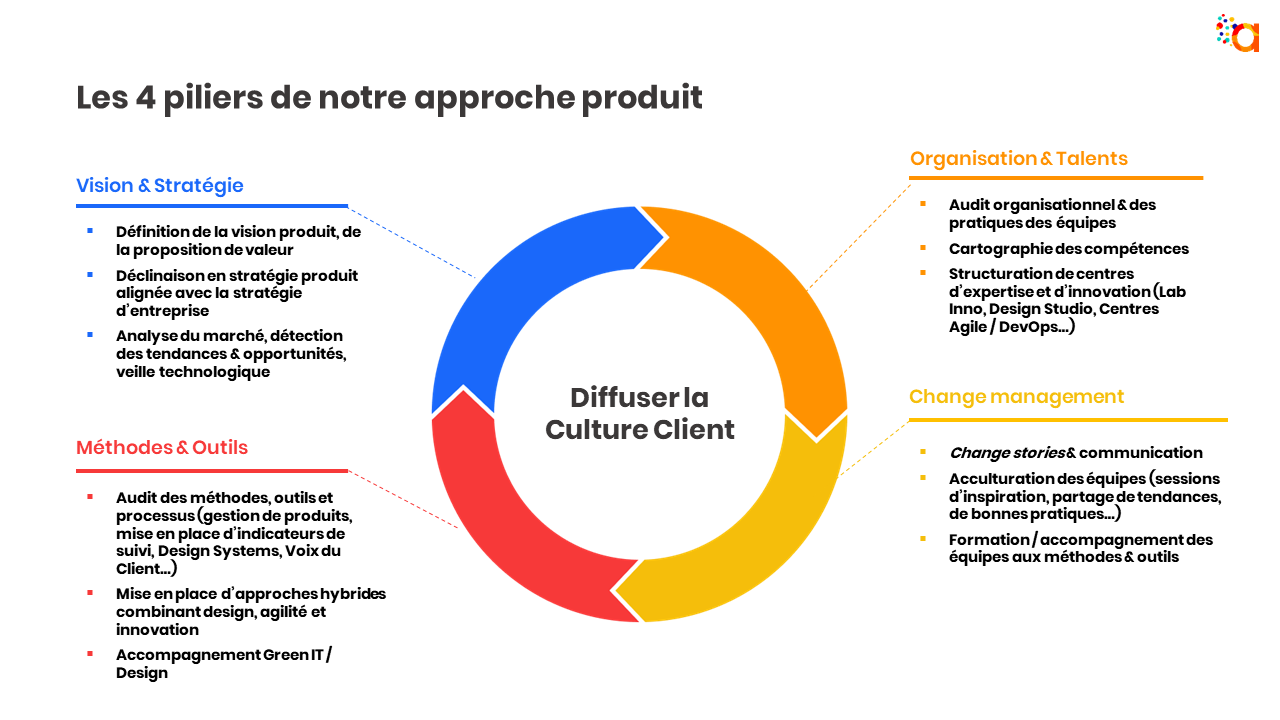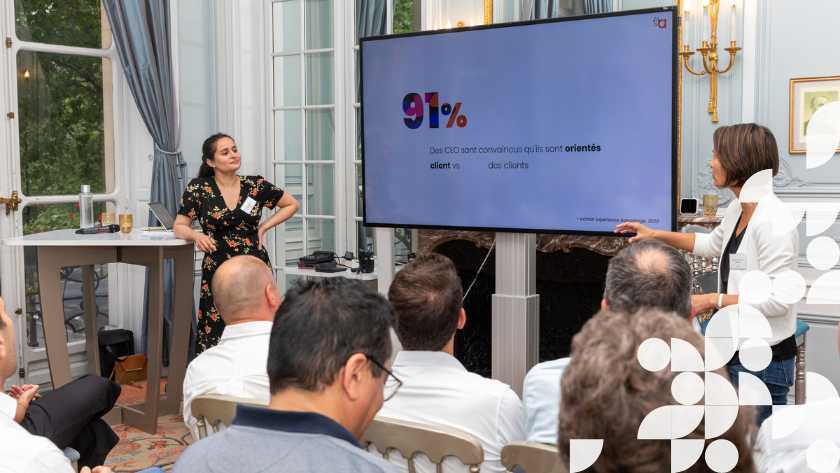How much do you invest in customer experience?
The 28th edition of the CIO Circle kicked off with a series of questions from our product maturity test to open up the minds of our participants to a somewhat different theme than usual: How to reconcile Product Culture and Customer Culture?
In a warm atmosphere, about twenty participants gathered to explore this fascinating issue. On the agenda: sharing experiences, challenges, and best practices implemented with our clients! Our speakers, Vanessa and Mariam, took the floor to share their knowledge and experiences on this captivating topic.
Customer Culture and Product Culture: inseparable allies
During this presentation, we explored two essential concepts: Customer Culture and Product Culture. While the former focuses on customer experience and satisfaction, the latter concentrates on designing high-quality products. It is crucial to understand that these two cultures are inseparable to foster innovation, continuous improvement, and the creation of competitive products with high added value that meet user needs.
"As we grow, we distance ourselves from our products and our customers. IT is on one side, the business on the other with a customer-supplier relationship."
Our deep conviction is reflected in our customer-centric product approach
At Aneo, our conviction is clear: the customer should be at the center of all our decisions. The product is there to meet the needs of the customer, not the other way around. Therefore, we prefer to talk about Customer Culture and Customer Experience as a whole. The dissemination of this customer culture relies on four fundamental pillars: Vision & Strategy, Organization & Talents, Methods & Tools, Change Management.
Vision & Strategy
This pillar encompasses defining the long-term vision of the product and the strategy to achieve the set goals. It requires alignment on the problems to solve, the value proposition, translating the vision into a product strategy, and constant market monitoring. To achieve this, you can, for example, meet your customers to understand their needs, co-build & share a clear product vision that addresses customer issues, build and evolve a product roadmap based on measurable and achievable objectives (OKRs).
Organization and Talents
This pillar concerns the people involved in product management. Note that there is no perfect organization, so iterate to find yours... And to start, define roles and responsibilities, identify the key skills you need. We advise you to invest in multidisciplinary teams with a high degree of autonomy, pool cross-functional skills in centers of expertise, or encourage your teams to propose their ideas by participating in innovation initiatives.
Methods and tools
This pillar concerns the methods, tools, and processes used to develop, test, and deliver the product. It is crucial to adopt agile or iterative approaches focused on customer needs, as well as continuous improvement practices. Start by observing and questioning your teams to define their level of maturity and adapt methods and tools accordingly: Design Thinking, Lean Startup, F.O.C.U.S.E.D method...
the methods are varied! Pick and choose what makes sense for you and your teams and create your own toolbox & methods!
Change Management
This final pillar focuses on disseminating a customer-centric culture throughout the organization. Share customer knowledge, raise awareness among employees about the customer experience, and embody the customer culture within the leadership. For example, you can assess the customer maturity level of your organization, promote Customer Culture at the highest level (e.g., developing CX KPIs tracked by management), or implement simple initiatives to acculturate teams (training, REX, customer immersions, inspiration sessions...)

No magic formula, just common sense and a lot of experimentation
The keys to success lie in the ability to be user-centric and address their problems, to align teams with this vision to refine the strategy, to foster an iterative and empirical approach, to prioritize rapid prototypes and user testing to validate concepts, to encourage cross-functional collaboration by bringing together different expertise, and to disseminate customer culture at all levels of the company.
Closing thoughts
Reconciling Product and Customer Cultures requires a profound cultural transformation, but the benefits in terms of financial success and business development are well worth it. So, let's embark on this exciting adventure, where the customer is king and customer experience is our compass to success!




